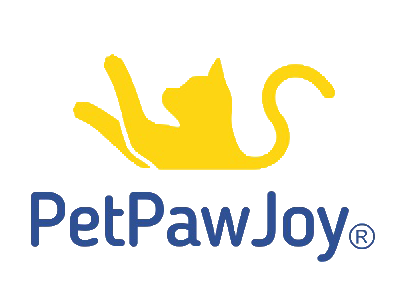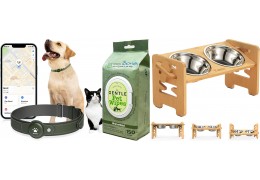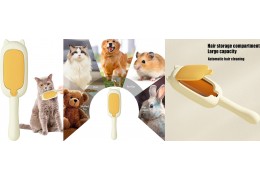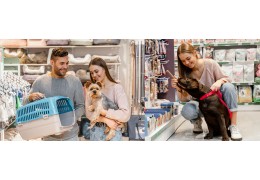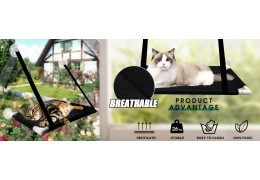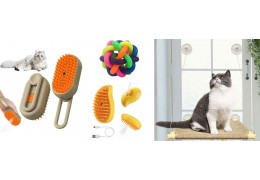AI and advanced technology are reshaping the pet supply chain, helping wholesalers optimize inventory, enhance...
Exporting Pet Products to the US: Compliance & Packaging Tips
Exporting to the United States is a major goal for every international pet product exporter—but success depends heavily on understanding USA pet product regulations and optimizing your pet export packaging. The US market is booming with demand for safe, compliant, and well-packaged pet supplies. However, without proper documentation, labeling, and testing, even top-quality goods risk rejection at the border.
This comprehensive guide covers everything a global exporter needs to know in 2026, from regulatory requirements and certifications to cost-efficient packaging strategies.
The Growing Opportunity for Global Pet Product Exporters
In 2026, the US pet product market is expected to exceed $150 billion. Key trends like pet humanization, eco-conscious buying, and premiumization are driving this demand.
Top import categories:
- Grooming products
- Beds and accessories
- Toys and training aids
- Collars, leashes, and crates
As a pet product exporter, tapping into this market presents incredible opportunities—if you can navigate compliance and logistics effectively.
Overview of USA Pet Product Regulations
To legally enter the US market, every pet product exporter must comply with strict federal and state guidelines. Multiple agencies play a role depending on the product type:
Agency Role
FDA (Food & Drug Administration) Oversees pet food and treats
USDA (Department of Agriculture) Animal origin materials, pest control
EPA (Environmental Protection Agency) Pesticides, flea/tick products
CBP (Customs and Border Protection) Entry documentation, duties, labeling
Understanding USA pet product regulations for your product category is non-negotiable.
Product Categories and Their Regulatory Requirements
Different categories require different approaches:
- Pet Food/Treats: FDA registration, ingredient restrictions, labeling requirements
- Toys/Accessories: CPSIA compliance for safety, ASTM testing
- Beds & Soft Goods: Flame retardant testing, textile certifications
- Grooming Products: Ingredient transparency, safety labeling
Each category may require different packaging standards and labeling formats to comply with USA pet product regulations.
Top Compliance Challenges Faced by Pet Product Exporters
Some common hurdles for international sellers include:
- Mislabeling or missing English translations
- Lack of chemical or allergen testing
- Incorrect Harmonized System (HS) codes
- Unacceptable packaging materials (e.g., excessive plastics)
These mistakes can delay your shipment, result in hefty fines, or lead to permanent rejection by US customs.
Labeling and Documentation: Must-Have Elements
To comply with USA pet product regulations, packaging must include:
- Product name and intended use
- Manufacturer/importer name and address
- Country of origin
- Lot number or batch code
- Ingredient list (for food, treats, and grooming)
Labels must be in English, clear, legible, and affixed to the pet export packaging securely.
Testing and Certification Requirements
Depending on your product, testing may be required for:
- Lead, phthalates, or other chemicals (especially for toys and accessories)
- Choking hazards or sharp components
- Foam or textile flammability
- Ingredient safety for consumables
Recommended certifications include:
ASTM F963 for toys
CPSIA for child/pet safety
ISO 9001 for manufacturing process compliance
Partner with labs experienced in US standards to get your products tested before shipping.
Understanding Pet Export Packaging Standards
Your pet export packaging is your first line of compliance and brand impression. It must meet:
Durability: Withstand long transit and handling
Marking standards: Display all required regulatory info
Material safety: No toxic dyes, choking parts, or allergen exposure
Avoid plastic-only solutions unless labeled recyclable. Many US distributors now prefer paperboard, molded pulp, and compostable options.
Pet Export Packaging Tips for Cost and Compliance
Smart pet export packaging not only keeps your product safe—it boosts margins and marketability.
Best practices:
Use lightweight materials to save on shipping
Include tamper-proof seals for consumables
Offer shelf-ready packaging with display hangers
Integrate QR codes for digital instructions or certificates
Also, ensure packaging reflects modern design trends: minimalist graphics, pastel tones, and eco-badges are winning on US shelves.
Country of Origin and Branding Requirements
All pet products entering the US must clearly state:
“Made in [Country]” on packaging
Brand name or white-label importer
Safety warnings as required (e.g., “Not for children under 3 years”)
Misrepresenting the country of origin is considered fraud under USA pet product regulations and can lead to blacklisting.
Role of Freight Forwarders and Customs Brokers
A professional freight forwarder and customs broker can be a pet product exporter’s best ally. They help:
File all customs entry documents
Determine HS codes and duties
Coordinate FDA or USDA clearance
Handle port inspections or detentions
They’re especially vital when exporting perishable or regulated pet items.
Documentation Checklist Before Shipping to the US
Make sure you include the following with every shipment:
1. Commercial Invoice
2. Packing List
3. Certificate of Origin
4. Bill of Lading or Airway Bill
5. SDS (Safety Data Sheet) – if chemicals or grooming products are involved
6. Product Test Reports or Certifications
7. Photographs of Packaging and Labeling
Keeping all documents in digital format helps speed up customs clearance.
Pitfalls That Delay Clearance at US Ports
Avoid these common mistakes that can cost time and money:
- Incomplete product labeling or barcode errors
- Unapproved or unregistered ingredients in pet treats
- Incorrect packaging size claims
- Failing to pre-notify the FDA for food-related goods
- Misclassified HS codes that trigger re-inspection
The key to success? Triple-check every detail before dispatch.
USA-Specific Packaging Trends in 2026
To impress US distributors, retailers, and customers, stay ahead of 2026’s pet export packaging trends:
- Biodegradable materials for guilt-free disposal
- Pet-safe ink and dyes
- Transparent pouches for visual appeal
- Custom branding even in bulk packs
- Tamper-evident resealable closures
Retailers are also seeking stackable designs that fit well on shelves and in online deliveries.
Marketing Tips: Appealing to US Distributors and Retailers
Once your pet export packaging is compliant, focus on its retail appeal. Tips to attract US partners:
Use clear labels with bold visuals
Include eco-certifications or vet endorsements
Offer sample kits for B2B distributors
Bundle complementary products (e.g., toys + treats)
QR codes linking to usage videos, certifications, or brand stories can create instant trust.
FAQs on Exporting Pet Products to the US
Q1: What’s the biggest challenge for new exporters?
A1: Navigating the complexity of USA pet product regulations, especially for food or medicated items.
Q2: Can I use my domestic labels for US exports?
A2: No. All labels must be in English and follow FDA/CBP guidelines.
Q3: What are the penalties for non-compliant packaging?
A3: Seizure of goods, fines, delays, and potential bans from entering the US market.
Q4: Do I need separate labeling for online and retail sales?
A4: Often yes—retail requires display packaging, while eCommerce might allow simplified labeling.
Q5: Are reusable or eco-friendly packages mandatory?
A5: Not yet, but they’re strongly preferred by major US distributors in 2026.
Q6: Can I export under a white-label brand?
A6: Yes, but ensure you meet all labeling and documentation requirements for the importer.
Final Thoughts:
Building a Sustainable Pet Product Export Strategy
Being a successful pet product exporter to the US in 2026 requires a combination of compliance mastery, quality assurance, and savvy branding. By staying current with USA pet product regulations and investing in modern, sustainable pet export packaging, your brand can win the trust of US distributors, retailers, and—most importantly—pet-loving consumers.
